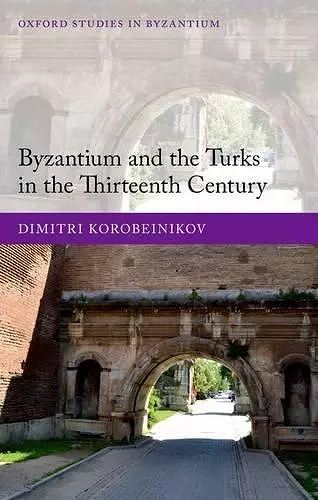Byzantium and the Turks in the Thirteenth Century
Format:Hardback
Publisher:Oxford University Press
Published:25th Sep '14
Currently unavailable, and unfortunately no date known when it will be back

At the beginning of the thirteenth century Byzantium was still one of the most influential states in the eastern Mediterranean, possessing two-thirds of the Balkans and almost half of Asia Minor. After the capture of Constantinople in 1204 during the Fourth Crusade, the most prominent and successful of the Greek rump states was the Empire of Nicaea, which managed to re-capture the city in 1261 and restore Byzantium. The Nicaean Empire, like Byzantium of the Komnenoi and Angeloi of the twelfth century, went on to gain dominant influence over the Seljukid Sultanate of Rum in the 1250s. However, the decline of the Seljuk power, the continuing migration of Turks from the east, and what effectively amounted to a lack of Mongol interest in western Anatolia, allowed the creation of powerful Turkish nomadic confederations in the frontier regions facing Byzantium. By 1304, the nomadic Turks had broken Byzantium's eastern defences; the Empire lost its Asian territories forever, and Constantinople became the most eastern outpost of Byzantium. At the beginning of the fourteenth century the Empire was a tiny, second-ranking Balkan state, whose lands were often disputed between the Bulgarians, the Serbs, and the Franks. Using Greek, Arabic, Persian, and Ottoman sources, Byzantium and the Turks in the Thirteenth Century presents a new interpretation of the Nicaean Empire and highlights the evidence for its wealth and power. It explains the importance of the relations between the Byzantines and the Seljuks and the Mongols, revealing how the Byzantines adapted to the new and complex situation that emerged in the second half of the thirteenth century. Finally, it turns to the Empire's Anatolian frontiers and the emergence of the Turkish confederations, the biggest challenge that the Byzantines faced in the thirteenth century.
This is an excellent contribution to the study of the thirteenth century, and the field will wait expectantly for the next volume, in which Korobeinikov has promised to expand his analysis into the fifteenth century. * Matthew Kinloch, English Historical Review *
Dimitri Korobeinikov has undertaken the challenge to look at Byzantine-Turkish relations in the thirteenth century as a whole. He has ardently filtered through all of the information provided by the sources in Persian, as well as utilized the well-known chronicle of Ibn Bibi ... He merits praise for not limiting his study to the years between 1204 and 1261, the key dates for the Latin Empire ... [a] stimulating book * Jean-Claude Cheynet, American Historical Review *
Byzantium and the Turks in the Thirteenth Century is a major new contribution to a question of great historical importance. As the most thorough and in-depth discussion of the triangle of Byzantine-Seljuk-Mongol relations in the thirteenth century, it is indispensable reading for any historian interested in the collapse of Byzantium and the emergence of Turkish power. * Demetrios Kyritses, Byzantia Symmeikta a *
- Winner of Winner of the 2018 John Nicholas Brown Prize.
ISBN: 9780198708261
Dimensions: 240mm x 162mm x 29mm
Weight: 740g
396 pages